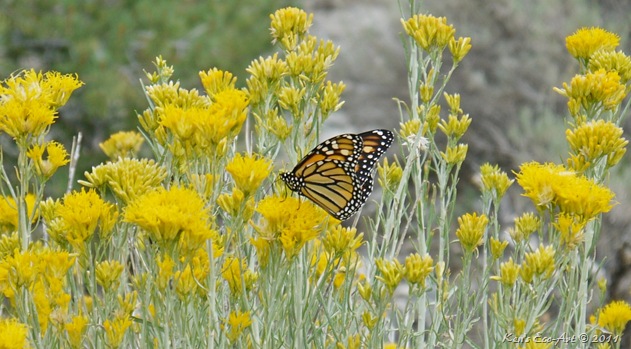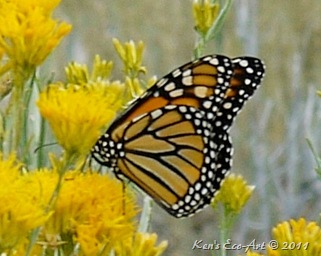| The Monarch’s wingspan ranges from 3½–4 inches. The upper side of the wings are a tawny-orange, the veins and margins are black, and in the margins are two series of small white spots. The fore wings also have a few orange spots near the tip. The underside is similar but the tip of the fore wing and hind wing are yellow-brown instead of tawny-orange and the white spots are larger. Like most insects the Monarch has six legs, however it only uses four of its legs, carrying its two front legs against its body. The Monarch is famous for its southward migration and northward return in summer from Canada to Mexico and Baja California which spans the life of three to four generations of the butterfly. The monarch is the only butterfly that migrates both north and south like birds. as the birds do on a regular basis. By the end of October, the population west of the Rocky Mountains overwinters in various sites in central coastal and southern California, most notably in Pacific Grove and Santa Cruz. |


